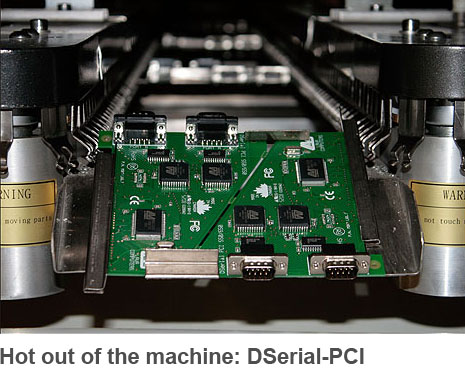1. Catching the Wave (Solder, that is)
What is a wave solder machine? For those unfamiliar with the technology, a wave solder machine is a production machine that maintains a pool of molten solder inside that is continually pumped over a ledge, forming what is essentially a permanent small waterfall of molten metal, a couple of inches high. To look at it, the molten solder hardly appears to be moving, being more viscous than water. It really looks just like a beautiful shiny metal curve, a static-seeming wave.
Our wave solder machine sit 24 hours a day with a big pot of molten solder inside even when it’s not operating, kind of like the hot oil in a tempura restaurant at four in the morning. As all our products use lead-free RoHS compliant solder this machine works at higher temperatures than our previous machine. And yet, despite the higher temperatures, these machines are still expected to operate within pretty fine tolerances when boards are passing through them.
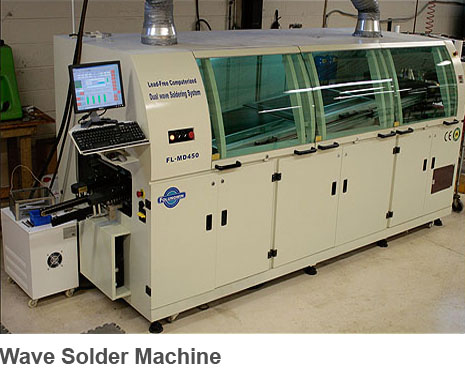
2. Heading up to "the wave"
Travelling across this “solderfall” is a conveyor system that carries boards that are about to be soldered, soldered for the second time actually. The first soldering has already happened earlier in the production process, when surface-mounted components are soldered in an oven, but that is another story. Also shown is an example of a surface-mounted component (the LAVA S3-S4 ASIC). Notice that all the quite tiny pins are soldered to the surface of the board; they do not pass through.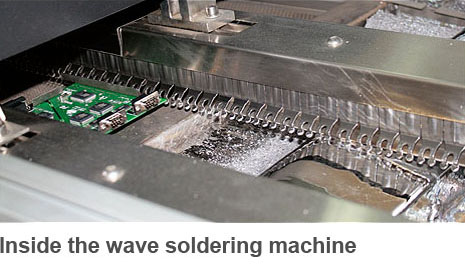
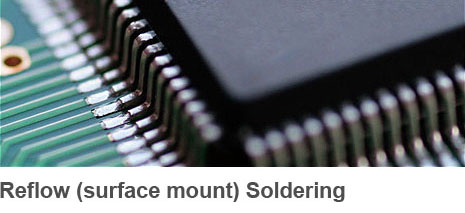
3. Riding the wave
By contrast, the wave solder machine solders just the through-mounted components, those components that have pins actually sticking right through the board. Below are images of the back side of a LAVA card, before and after wave soldering. In these shots, it is the pins of a DB-9 serial connector that are shown.
Before wave soldering the pins are sticking through small passageways in the printed circuit board, waiting to be soldered. On their way along to the solder wave, the boards get a treatment of solder flux. The flux prevents the formation of oxides that would lead to less effective soldering, and wets the points that will be soldered, assisting the solder to flow where it should.
After wave soldering, these pins now have a tiny dab of solder on each; this is accomplished by conveying the unsoldered board across the waterfall of solder slowly and deliberately. The molten solder just licks the tips of the pins that are sticking through waiting to be soldered, and flows up into the small passageways through which the pins pass. Voila!
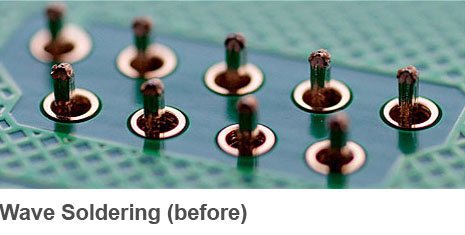
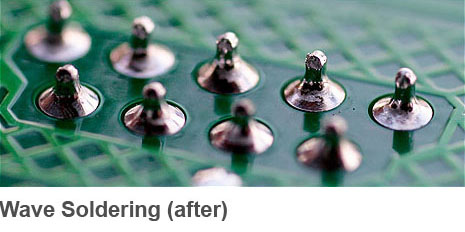
4. Final Stage: Soldering Oven
After soldering, the cards cool and are cleaned, ready for testing. Every card that we make is individually tested before packing and shipping, so we know it works. We believe it does you no good to buy the one card in five hundred that could slip through when products from production batches are tested at random. You’ll have to buy someone else’s cards to have that pleasure!
